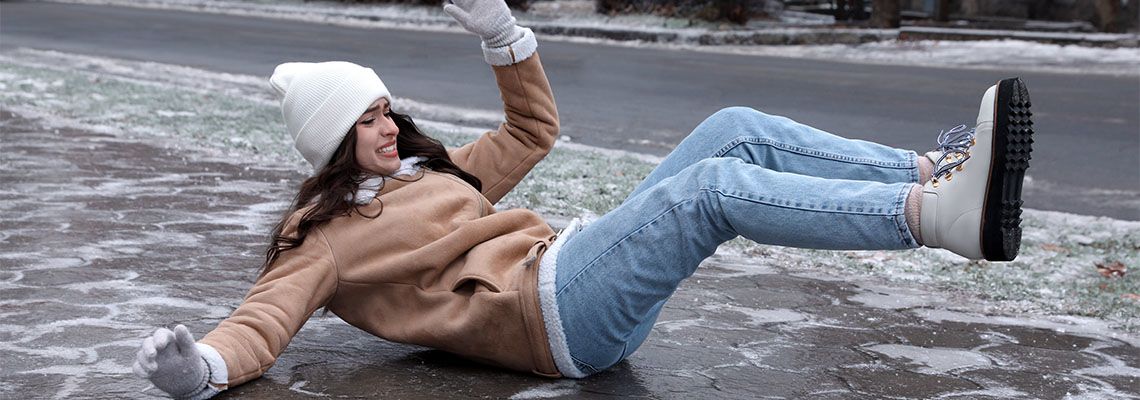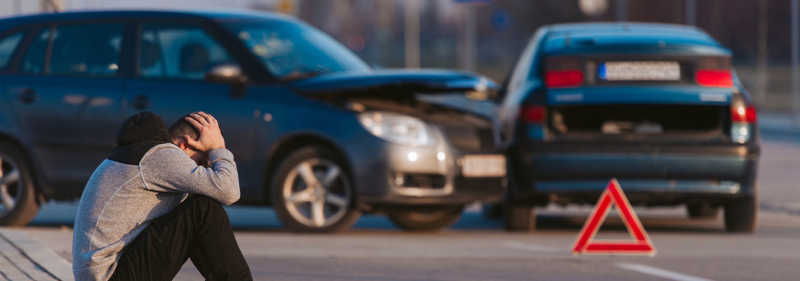
Who Is At Fault When I Slip and Fall on the Ice?
Slipping and falling can happen to anyone, especially in the winter months when ice becomes a dominant safety hazard. Injuries from stumbling on icy pavement can range from minor bruises to severe fractures. According to the National Floor Safety Institute, falls account for 87% of all fractures among individuals ages 65 and older, and they’re the second leading cause of spinal cord injuries and brain injury symptoms.
In these severe cases, slip-and-fall victims may find themselves in a stressful financial situation, with expensive medical bills and lost wages resulting from their injuries. If this has happened to you or a loved one, and the slip-and-fall accident occurred on another’s property after they failed to de-ice the walkways, you have the right to explore your legal options for financial compensation.
Before filing your claim or lawsuit, it’s important to understand who could be considered at-fault for your injuries. Our Colorado personal injury attorneys at Gama Law Firm LLC can walk you through what you need to know.
The Elements of Your Slip-and-Fall Claim
Slip-and-fall accident claims involving icy conditions succeed when they prove that a property owner’s negligence led to your injuries. To effectively prove negligence, your claim must follow this narrative structure:
The property owner’s duty of care must first be present, as the following three elements branch off of it. Generally, a duty of care exists between business owners and their customers and clients. It can also exist between property owners and guests they invite to their property.
There is a breached duty of care, demonstrated by a negligent action of whoever is responsible for the premises where you slipped and fell. In slip-and-fall accidents on ice, a breached duty of care would have to fall under the following scenarios:
The property owner knew about the winter weather hazards and did not attempt to rectify them.
The property owner should have known about the dangerous conditions and should have taken reasonable steps to reduce the risk of harm to visitors.
The property owner purposefully created or worsened the icy conditions that led to the accident.
You, the plaintiff, have suffered injuries. These injuries must be a direct result of the negligent party’s breach to their owed duty of care.
The icy spot that led to your fall must be proven as the cause for your injuries, demonstrated by medical records from doctor visits immediately following your fall.
Determining Fault
The following are important questions to ask when determining who’s at fault for icy slip-and-fall accidents:
Were you a trespasser, licensee, or invitee? If you were an unwelcome guest or trespasser on the property where you slipped on ice and fell, the chances for receiving fair compensation could be quite slim.
Who is responsible for the icy premises? Depending on where your fall took place, the property owner may not be the one who’s liable. Businesses, for example, often have contracts with plow companies that perform snow and ice removal to keep their sidewalks and parking lots clear for customers and pedestrians. To determine who is truly at fault, it’s important to seek the help of a premises liability attorney.
Did the responsible party act reasonably to prevent or clear the ice from the ground? For example, was there evidence that they tried to scrape away the ice or salt their sidewalks? Evidence of these efforts may remove their liability for your fall, as it exhibits the owner’s 1) acknowledgment of the dangerous conditions and 2) their obligation to take reasonable measures and protect people who visit their property. Also, it’s important to note that, under the natural accumulation rule, a property owner cannot be liable when your injuries were caused by naturally occurring ice or snow on their property, i.e. you came to their property in the thick of a storm when it’s impossible to keep up.
Did you do anything that may be considered “comparative” fault? Just as property owners owe a duty of care to guests, customers, and clients, property visitors have a duty to exercise reasonable care when navigating an area they know will be icy. So if you were walking at full speed into a store immediately following a winter storm and sustained injuries after falling on an icy sidewalk — even if a property owner breached their duty of care — the court will likely conclude that you share a portion of the blame.
Comparative Negligence in Colorado
Comparative negligence laws exist because it’s quite rare for one party to share 100% of the blame in an accident. Colorado is a modified comparative negligence state. This means that, as a plaintiff in a slip-and-fall lawsuit, if you’re found to hold any responsibility for your accident, then your financial settlement will be reduced by your percentage of fault.
Example:
Say you’re suing the owner of a local restaurant for $12,000 after you fractured your wrist from slipping on the sidewalk leading to their main entrance. There had been freezing rain that morning. The sidewalk was completely covered in ice, even though many hours had passed after the storm, giving the business ample time to remove the hazardous conditions.
During your hearing, evidence is presented from the restaurant’s security cameras that you were walking quite fast and looking at your phone right before you fell. While most of the fault still lies with the restaurant owner for failing to act reasonably and remove the ice, the jury concludes that you share 20% of the blame because, had you not been distracted by your phone, you would have been navigating the space with more care.
So, under Colorado’s comparative negligence rule, your new settlement would be calculated by taking 20% of $12,000 ($2,400) and subtracting that from the total you could have received. Thus, you walk away with $9,600, which directly aligns with the percentage of fault (80%) of the responsible party.
Consult a Knowledgeable Attorney
If you’re seeking representation for yourself or a loved one who’s suffered from a fall on the ice, call Gama Law Firm LLC today at our office in Aurora, Colorado. We will thoroughly investigate the details of your case to determine the responsible party and advocate for your right to fair compensation. We proudly extend our services to injury victims and their families throughout Denver, Parker, Centennial, Castle Pines, and the nearby areas.

